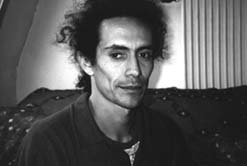This issue's interview is based on a conversation the musicologist, NAKAGAWA Shin, had with the sound artist, Erik SAMAKH, at his home studio in Paris on March 31, 1995.

sa Sound Arts vol. 6
XEBEC SoundCulture Membership Magazine |
Interview with Erik SAMAKH |
This issue's interview is based on a conversation the musicologist, NAKAGAWA Shin, had with the sound artist, Erik SAMAKH, at his home studio in Paris on March 31, 1995. |
 |
The contents of this issue: | Akio SUZUKI part 2 | FUJISHIMA interviews VOLANS |
TOOP Ocean of Sound | CAParty! |
| To SoundArts Back Issues | Back to Carl Stone Home Page | |||